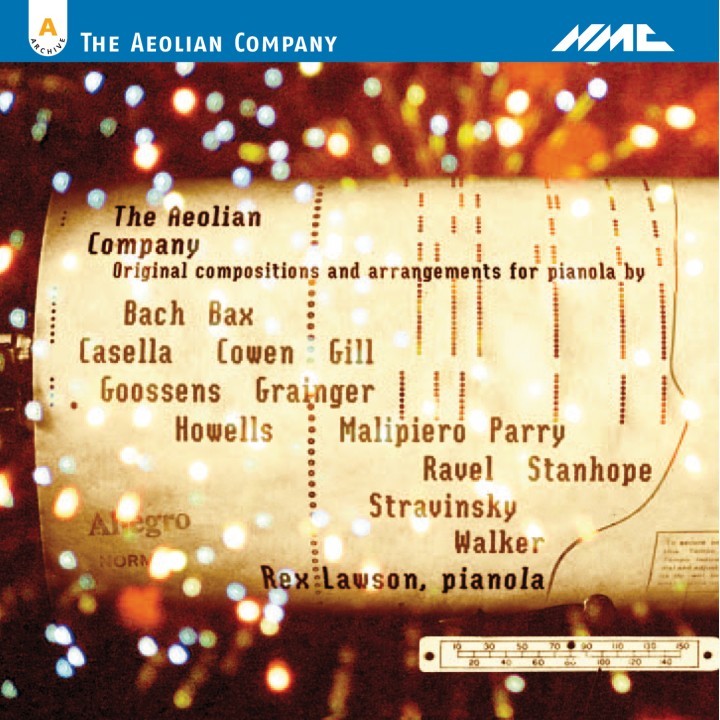Herbert Howells
Herbert Howells was born in Lydney, Gloucestershire in 1892; at the age of eighteen he became a pupil of Herbert Brewer, organist of Gloucester Cathedral. At the Royal College of Music he studied under Charles Villiers Stanford and Hubert Parry.
In 1920, after ill-health forced him to relinquish his position as sub-organist of Salisbury Cathedral, Howells returned to the RCM to teach composition; he also taught at St Paul's Girls' School, Hammersmith, and, in 1950, was appointed King Edward VII Professor of Music at London University.
Unlike his close friend and mentor, Ralph Vaughan Williams, Howells never collected or made direct use of folk songs. He did, however, accept their importance as part of a wider musical heritage but preferred to allow church modes and the pentatonic scale to play a more prominent part in the construction of his output, in works such as the Fantasia for Cello and Orchestra (1936) and the Concerto for String Orchestra (1938).
His best known work, Hymnus Paradisi, was written in 1938 as a requiem for his son who died in infancy in 1935; for twelve years it was unperformed, remaining, as Howells put it, 'A personal, almost secret document', but at the request of Vaughan Williams, Howells conducted its premiere at the 1950 Three Choirs Festival.
Howells's move from secular to sacred music continued into the 1940s with a series of Mass settings and Canticles, notably the Magnificat and Nunc Dimittis from the Anglican Evensong service. Over twenty settings are known of which the settings for King's College, Cambridge (Collegium Regale), St Paul's and Gloucester Cathedrals are among the finest.
Herbert Howells died in 1983 at the age of 90. During his life he has been awarded a Collard Life Fellowship (Worshipful Company of Musicians), CBE (1953) and in 1972 was made a Companion of Honour.
Herbert Howells was born in Lydney, Gloucestershire in 1892; at the age of eighteen he became a pupil of Herbert Brewer, organist of Gloucester Cathedral. At the Royal College of Music he studied under Charles Villiers Stanford and Hubert Parry.
In 1920, after ill-health forced him to relinquish his position as sub-organist of Salisbury Cathedral, Howells returned to the RCM to teach composition; he also taught at St Paul's Girls' School, Hammersmith, and, in 1950, was appointed King Edward VII Professor of Music at London University.
Unlike his close friend and mentor, Ralph Vaughan Williams, Howells never collected or made direct use of folk songs. He did, however, accept their importance as part of a wider musical heritage but preferred to allow church modes and the pentatonic scale to play a more prominent part in the construction of his output, in works such as the Fantasia for Cello and Orchestra (1936) and the Concerto for String Orchestra (1938).
His best known work, Hymnus Paradisi, was written in 1938 as a requiem for his son who died in infancy in 1935; for twelve years it was unperformed, remaining, as Howells put it, 'A personal, almost secret document', but at the request of Vaughan Williams, Howells conducted its premiere at the 1950 Three Choirs Festival.
Howells's move from secular to sacred music continued into the 1940s with a series of Mass settings and Canticles, notably the Magnificat and Nunc Dimittis from the Anglican Evensong service. Over twenty settings are known of which the settings for King's College, Cambridge (Collegium Regale), St Paul's and Gloucester Cathedrals are among the finest.
Herbert Howells died in 1983 at the age of 90. During his life he has been awarded a Collard Life Fellowship (Worshipful Company of Musicians), CBE (1953) and in 1972 was made a Companion of Honour.
Compilations with this composer
CompilationsExternal Links
Music Map
Discover more about the classical music of today with NMC's Music Map, and exciting and educational online tool which enables you to see and hear the connections between composers, their teachers, pupils, influences and their works.
Music Map

